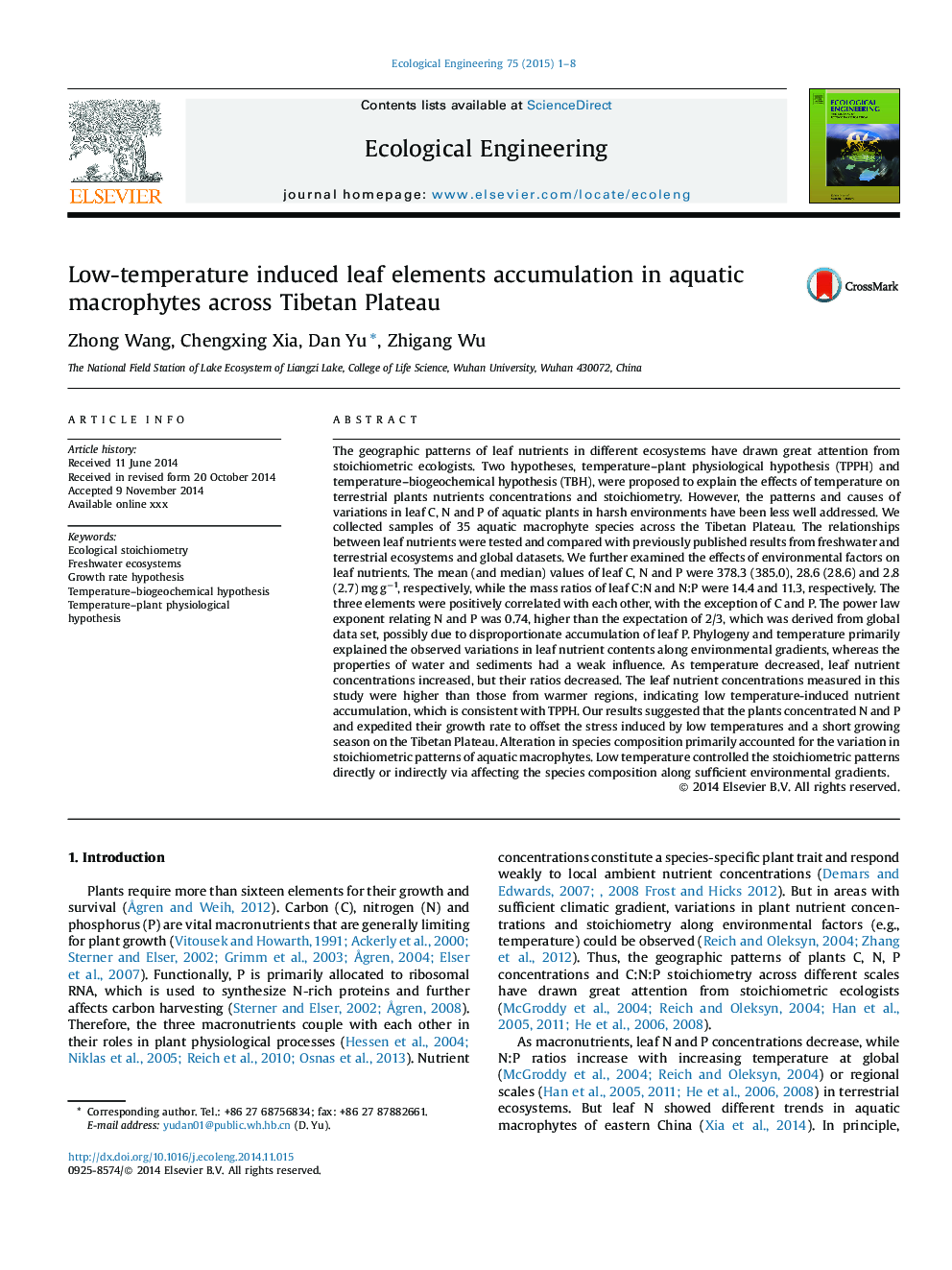| Article ID | Journal | Published Year | Pages | File Type |
|---|---|---|---|---|
| 6301648 | Ecological Engineering | 2015 | 8 Pages |
Abstract
The geographic patterns of leaf nutrients in different ecosystems have drawn great attention from stoichiometric ecologists. Two hypotheses, temperature-plant physiological hypothesis (TPPH) and temperature-biogeochemical hypothesis (TBH), were proposed to explain the effects of temperature on terrestrial plants nutrients concentrations and stoichiometry. However, the patterns and causes of variations in leaf C, N and P of aquatic plants in harsh environments have been less well addressed. We collected samples of 35 aquatic macrophyte species across the Tibetan Plateau. The relationships between leaf nutrients were tested and compared with previously published results from freshwater and terrestrial ecosystems and global datasets. We further examined the effects of environmental factors on leaf nutrients. The mean (and median) values of leaf C, N and P were 378.3 (385.0), 28.6 (28.6) and 2.8 (2.7) mg gâ1, respectively, while the mass ratios of leaf C:N and N:P were 14.4 and 11.3, respectively. The three elements were positively correlated with each other, with the exception of C and P. The power law exponent relating N and P was 0.74, higher than the expectation of 2/3, which was derived from global data set, possibly due to disproportionate accumulation of leaf P. Phylogeny and temperature primarily explained the observed variations in leaf nutrient contents along environmental gradients, whereas the properties of water and sediments had a weak influence. As temperature decreased, leaf nutrient concentrations increased, but their ratios decreased. The leaf nutrient concentrations measured in this study were higher than those from warmer regions, indicating low temperature-induced nutrient accumulation, which is consistent with TPPH. Our results suggested that the plants concentrated N and P and expedited their growth rate to offset the stress induced by low temperatures and a short growing season on the Tibetan Plateau. Alteration in species composition primarily accounted for the variation in stoichiometric patterns of aquatic macrophytes. Low temperature controlled the stoichiometric patterns directly or indirectly via affecting the species composition along sufficient environmental gradients.
Related Topics
Life Sciences
Agricultural and Biological Sciences
Ecology, Evolution, Behavior and Systematics
Authors
Zhong Wang, Chengxing Xia, Dan Yu, Zhigang Wu,
